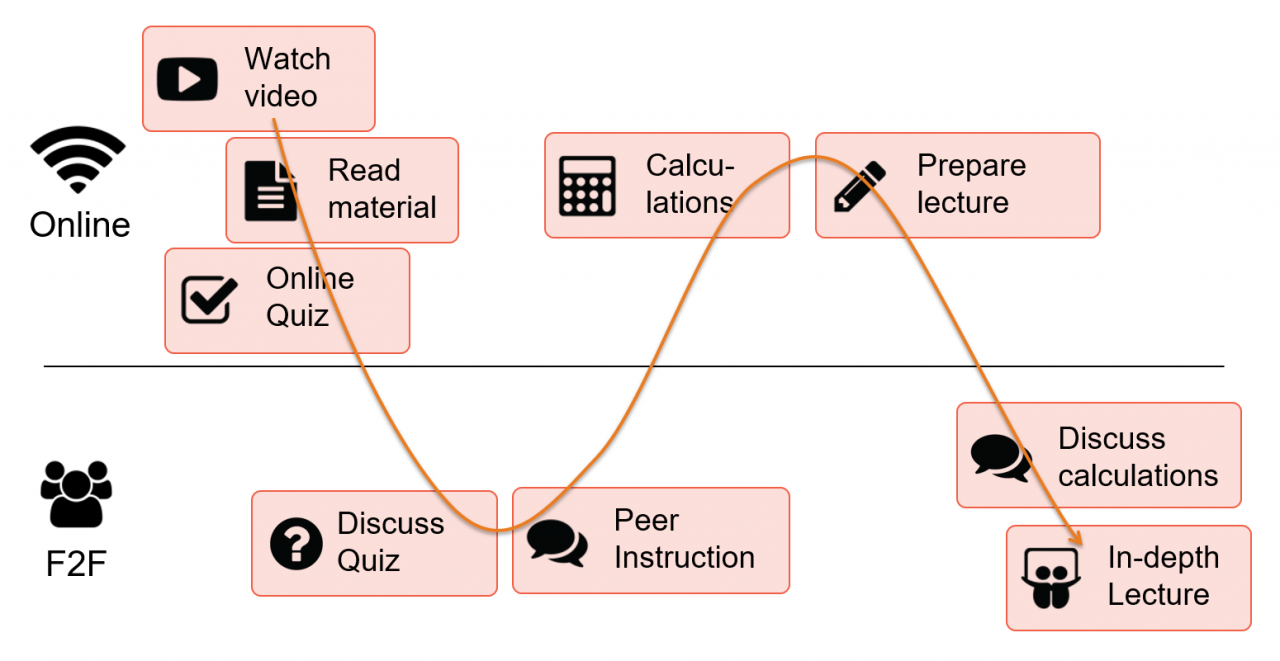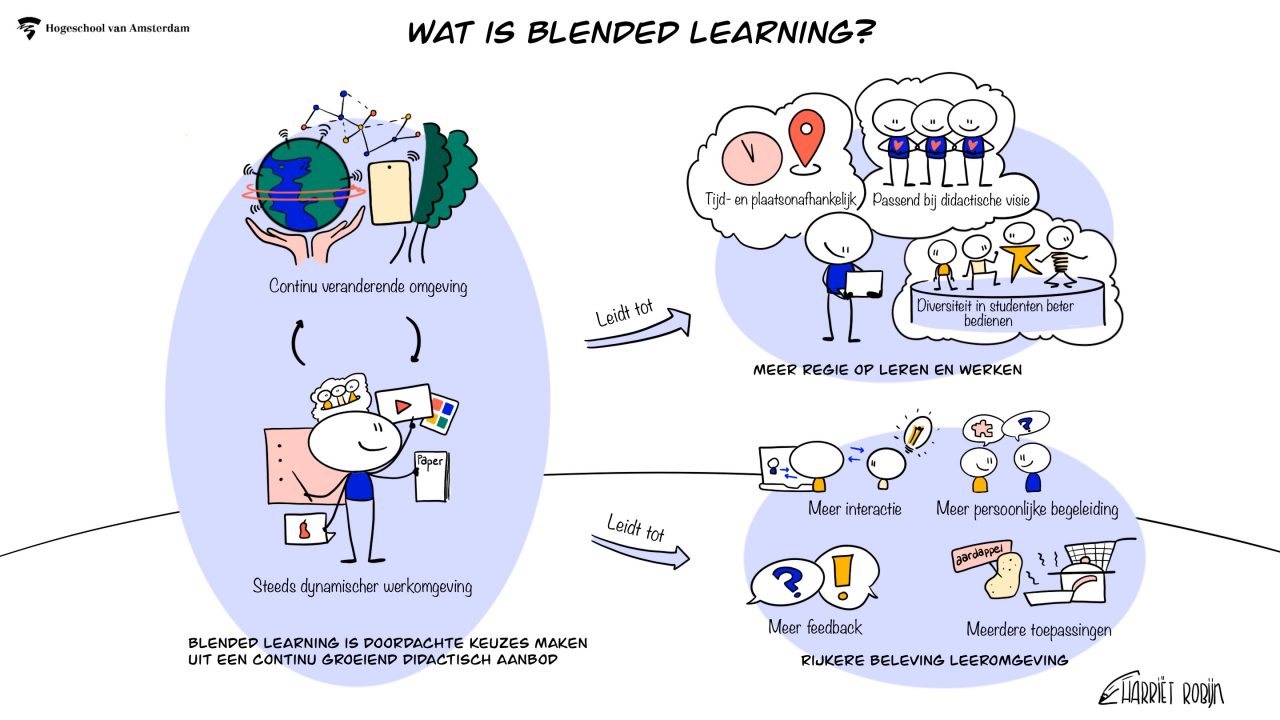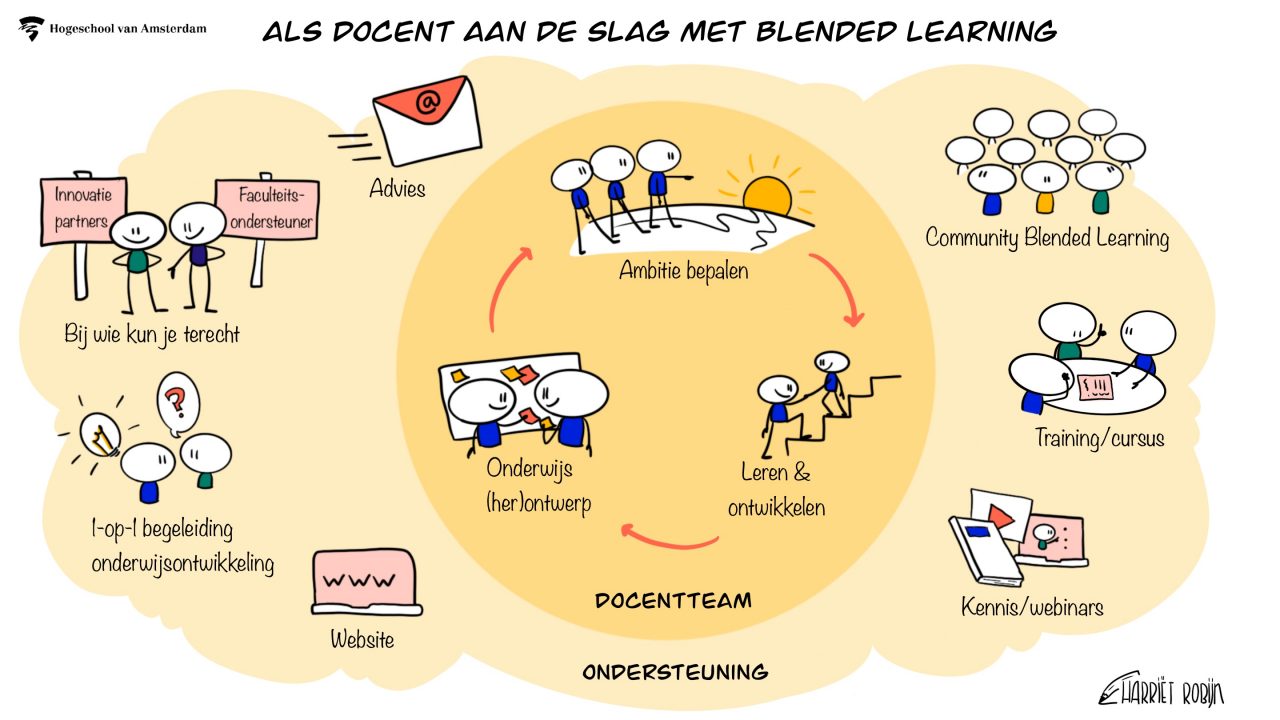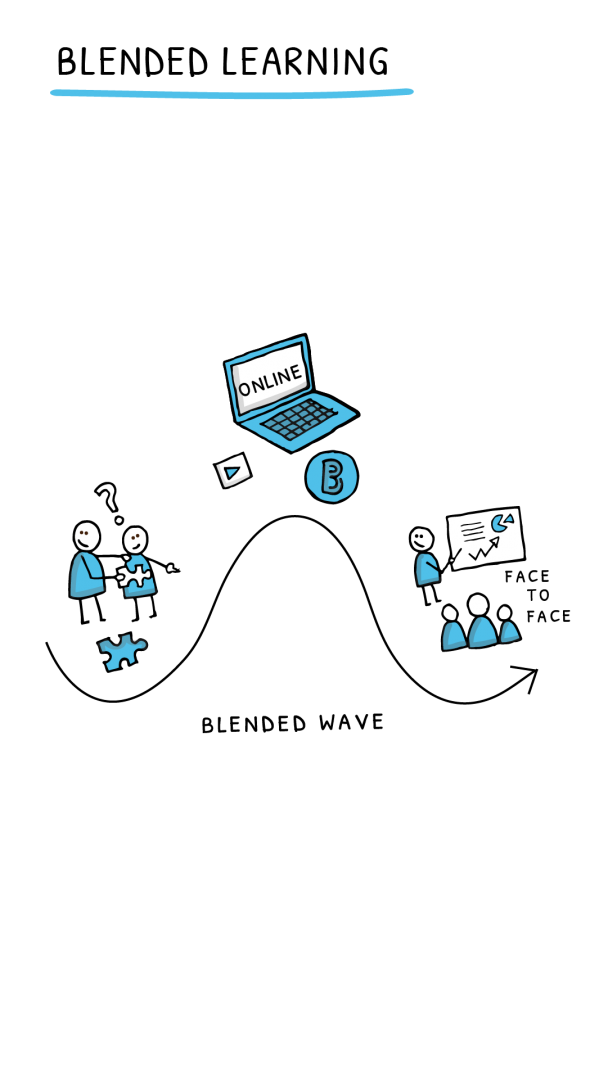Blended Learning
Education at AUAS is characterised by blended learning: a carefully considered and targeted mix of online and offline resources within a high-quality physical and digital learning environment. We invest in the quality of both online and offline teaching, Virtual Practical Education, open education, open science, artificial intelligence, greater use of big data and digital organisational strategy.
Why?
At FDMCI, we want to harness blended learning to boost the quality of education. Blended learning offers ways to:
- personalise education and make it more flexible;
- give students greater freedom of choice to pursue education in ways that suit them and that ensure quality interaction with lecturers and with fellow students;
- give lecturers greater freedom of choice to design and impart education in ways that suit them and that ensure good interaction with students;
- make international exchange programmes available to more students;
- improve access for students with a disability;
- limit unnecessary travel by making careful decisions about contact hours.
Strategic survey of blended learning at FDMCI (NL)
What?
There are two core aspects to blended learning:
1. A deliberately designed mix of face-to-face and digital educational activities and learning materials
Simply put, blended learning is a design approach that unites various ways of learning in a carefully structured educational design. Technology allows for (better) support of students, for instance by using contact hours for discussion and in-depth study rather than for imparting theory.
There are many ways of learning: attending lectures, reading books, debating, writing essays. Students learn the most by interacting with the course material, with fellow students and with lecturers, as described in the Community of Inquiry Model (ENG)/ Community of Inquiry model (SURF NL)

Figure 1 Community of Inquiry
Technology adds ways of facilitating such interaction: quizzes via apps in the classroom (Wooclap), interactive videos that integrate questions (FeedbackFruits), online discussions (Brightspace), peer feedback (FeedbackFruits) and automatic feedback to quizzes, tests and assignments. Combining these approaches in your educational design creates a blended learning wave: a mix of offline, online, synchronous and asynchronous learning activities.

Figure 2: Blended wave TU Delft
2. Synchronous and asynchronous learning activities
Blended learning is also a mix of synchronous and asynchronous learning; that is, learning at the same time as others (such as during a lecture) and not at the same time (such as students watching recorded presentations whenever and however often they want). A well-considered offer of both types provides students with a structured learning process.
Synchronous learning activities structure the week and the module, as students are expected to attend a physical class. Asynchronous learning activities help motivate students through a sense of connection with fellow students and with the degree programme. By interacting with the lecturer and fellow students, they can process the material actively and gain insight into their competence level.
Asynchronous learning activities motivate students by giving them autonomy and the flexibility to adapt their studies to their personal circumstances such as work, informal care provision and hobbies. Such activities also give them the freedom to study at their own pace; for example, if they find the material difficult, they can pause a video and rewatch it. Students who find the material easy can be challenged through extra assignments or can complete the course faster. Online and offline formative testing and automated feedback can reinforce students’ sense of competence by showing them which components they do and do not have a good command of.
What blended learning is not
To avoid confusion, it should be clear what blended learning is not:
Online emergency teaching
Blended learning is a deliberately designed mix of offline and digital education. It is different from 100% online education, where physical classes are often copied one by one to the online environment and deliberate decisions and designs tend to be absent. Online education is often undeservedly characterised as being in sharp contrast with offline education. In fact, these two types of learning activities can complement each other very well.
Hybrid education
Hybrid refers to something that is built up out of separate parts. Hybrid learning refers to learning activities that take place at the same time, such as offline and online activities: part of the group is physically present in the classroom and part connects via the Internet. The choice to offer education in this way should be deliberate so as to offer a meaningful learning experience to all participants, both offline and online. Just fitting out the classroom with a webcam and a screen does not guarantee that this will be the case.
Hybrid education, when chosen deliberately, can form part of blended learning, for example when international students participate in a module from abroad and the teaching has been designed with this in mind.
How?
There is no single model for blended learning. The way a blended learning wave is created depends, among other things, on the learning outcomes, the target group and the learning activities suited to these. Also see Developing education.
Wilfred Rubens describes 11 models for blended learning: https://www.te-learning.nl/blog/elf-modellen-voor-blended-learning/.



